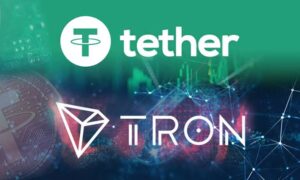
Blockchain technology, known for its and secure nature, has revolutionized fields ranging from finance to supply chain management. However, a new technology, quantum computing, poses significant challenges and opportunities for blockchain security. This blog post explores how quantum computing could impact blockchain systems, both in terms of potential threats and the advancements it might bring.
Understanding Blockchain Security
Blockchain security hinges on several key features:
1. Decentralization: No single point of control or failure exists, enhancing resilience against attacks.
2. Cryptographic Hash Functions: These ensure data integrity and enable efficient transaction verification.
3. Public-Key Cryptography: Blockchain uses asymmetric encryption for secure transactions, relying on pairs of public and private keys.
What is Quantum Computing?
Quantum computing utilizes the principles of quantum mechanics, enabling it to process information in fundamentally different ways compared to classical computers. Quantum bits, or qubits, can represent both 0 and 1 simultaneously through superposition and can entangle with other qubits to create complex states. This allows quantum computers to solve certain problems exponentially faster than classical computers.
Potential Threats to Blockchain Security
1. Breaking Public-Key Cryptography
Current blockchain systems depend heavily on public-key cryptography for securing transactions and wallet addresses. Algorithms like RSA and ECDSA (Elliptic Curve Digital Signature Algorithm) are used to generate and verify digital signatures.
– Quantum Threat: Shor’s algorithm, running on a sufficiently powerful quantum computer, can efficiently factor large integers and compute discrete logarithms. This capability threatens RSA and ECDSA, potentially allowing a quantum computer to derive private keys from public keys, compromising the security of transactions and wallet addresses.
2. Undermining Cryptographic Hash Functions
Cryptographic hash functions like SHA-256 underpin blockchain mining and the integrity of blockchain data.
– Quantum Threat: Grover’s algorithm offers a quadratic speedup for searching through an unsorted database, meaning it could halve the effective security level of hash functions. For instance, breaking a 256-bit hash with Grover’s algorithm would require \(2^{128}\) operations instead of \(2^{256}\), making it feasible with a sufficiently large quantum computer.
Mitigating the Risks
1. Quantum-Resistant Algorithms
Efforts are underway to develop quantum-resistant cryptographic algorithms that could replace current standards. These algorithms are designed to be secure against both classical and quantum attacks.
– Lattice-Based Cryptography: Based on the hardness of lattice problems, these algorithms offer strong resistance to known quantum attacks.
– Hash-Based Signatures: Techniques like Lamport signatures rely on the security of hash functions rather than integer factorization or discrete logarithms.
2. Hybrid Solutions
Blockchain systems can adopt hybrid approaches, integrating classical and quantum-resistant algorithms. This can provide transitional security as quantum technology matures.
3. Quantum Key Distribution (QKD)
QKD uses quantum mechanics to secure communication channels, allowing two parties to produce a shared random secret key known only to them. While primarily useful for point-to-point communication, QKD could enhance the security of blockchain networks by safeguarding communication between nodes.
Opportunities Presented by Quantum Computing
1. Enhanced Blockchain Performance
Quantum computing could solve complex problems more efficiently, including those related to optimization, which might benefit blockchain consensus mechanisms like proof-of-work (PoW).
– Example: Quantum algorithms could potentially improve the efficiency of mining, reducing the computational burden and energy consumption associated with blockchain networks.
2. Quantum-Secured Blockchains
Future blockchain systems could leverage quantum technologies for enhanced security. This includes using quantum cryptography for more secure consensus protocols and communication channels within the network.
Conclusion
The advent of quantum computing presents a dual-edged sword for blockchain technology. While it threatens existing cryptographic foundations, it also spurs the development of quantum-resistant techniques and new opportunities for performance enhancements. As quantum computing progresses, the blockchain community must stay vigilant, adapting to ensure that these decentralized systems remain secure and robust in the face of evolving technological landscapes.
—
*Stay informed on developments in blockchain and quantum computing to understand how they intersect and what steps can be taken to secure blockchain systems in a quantum future.*






